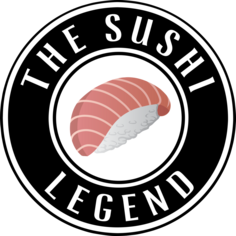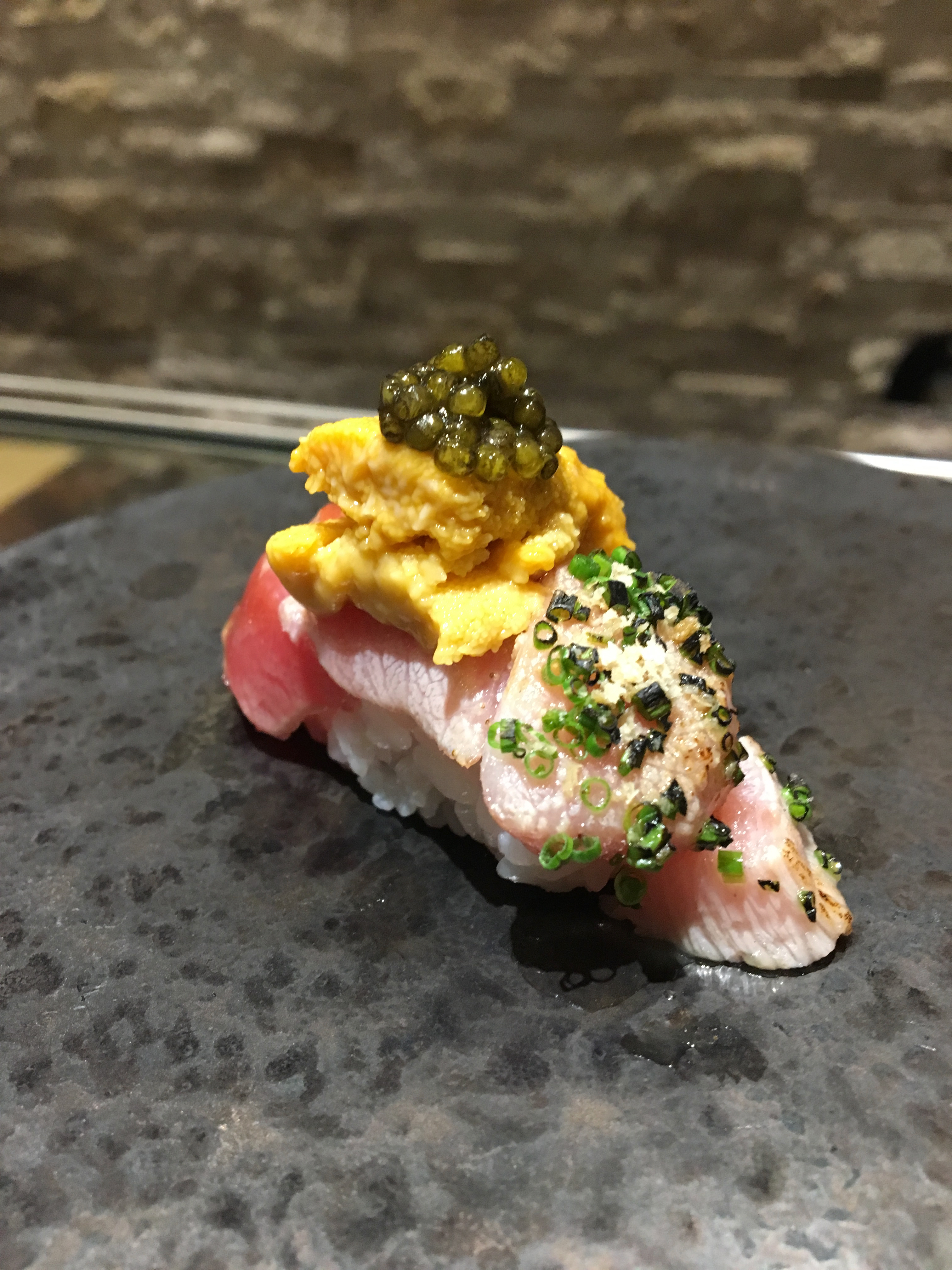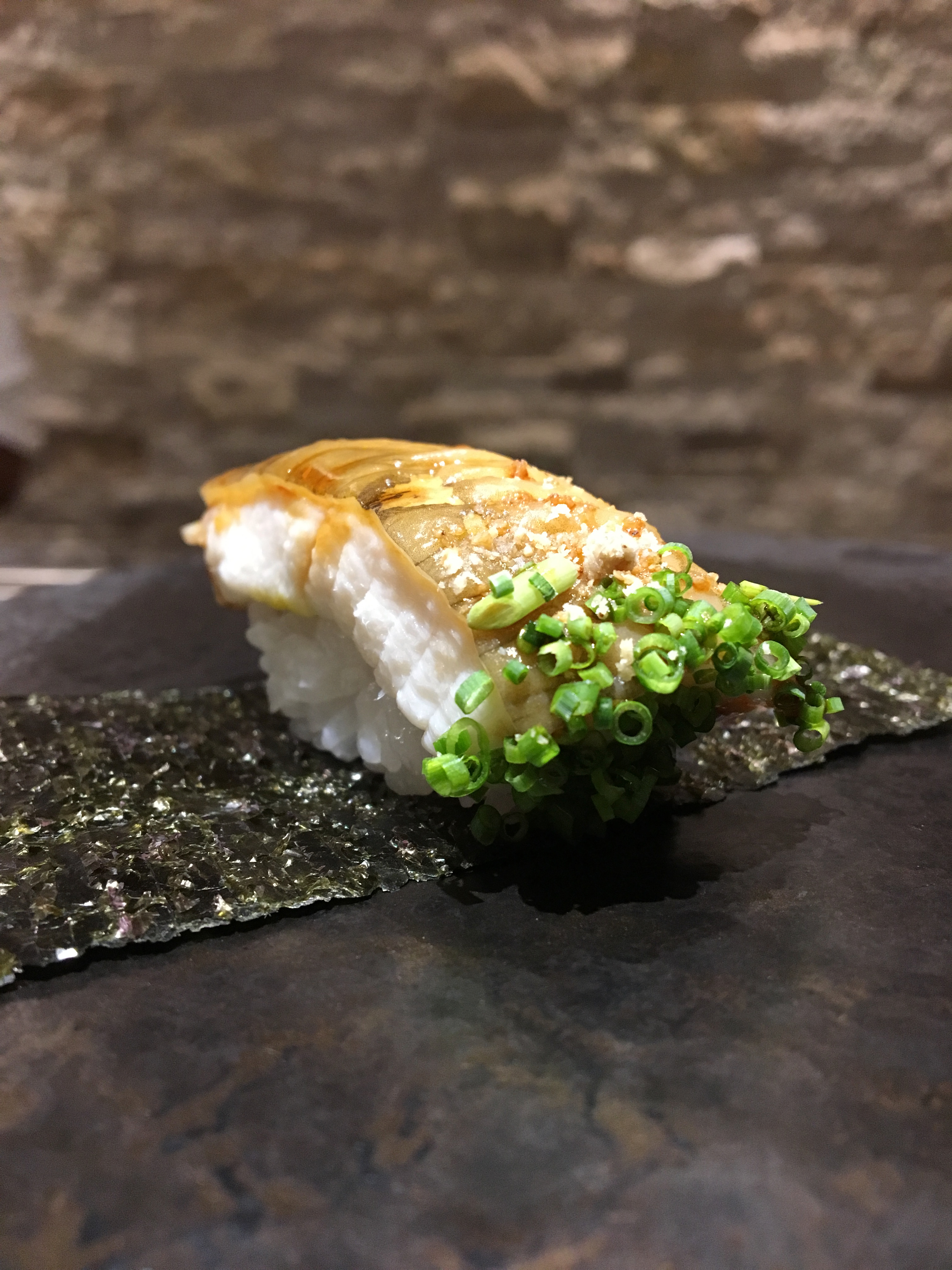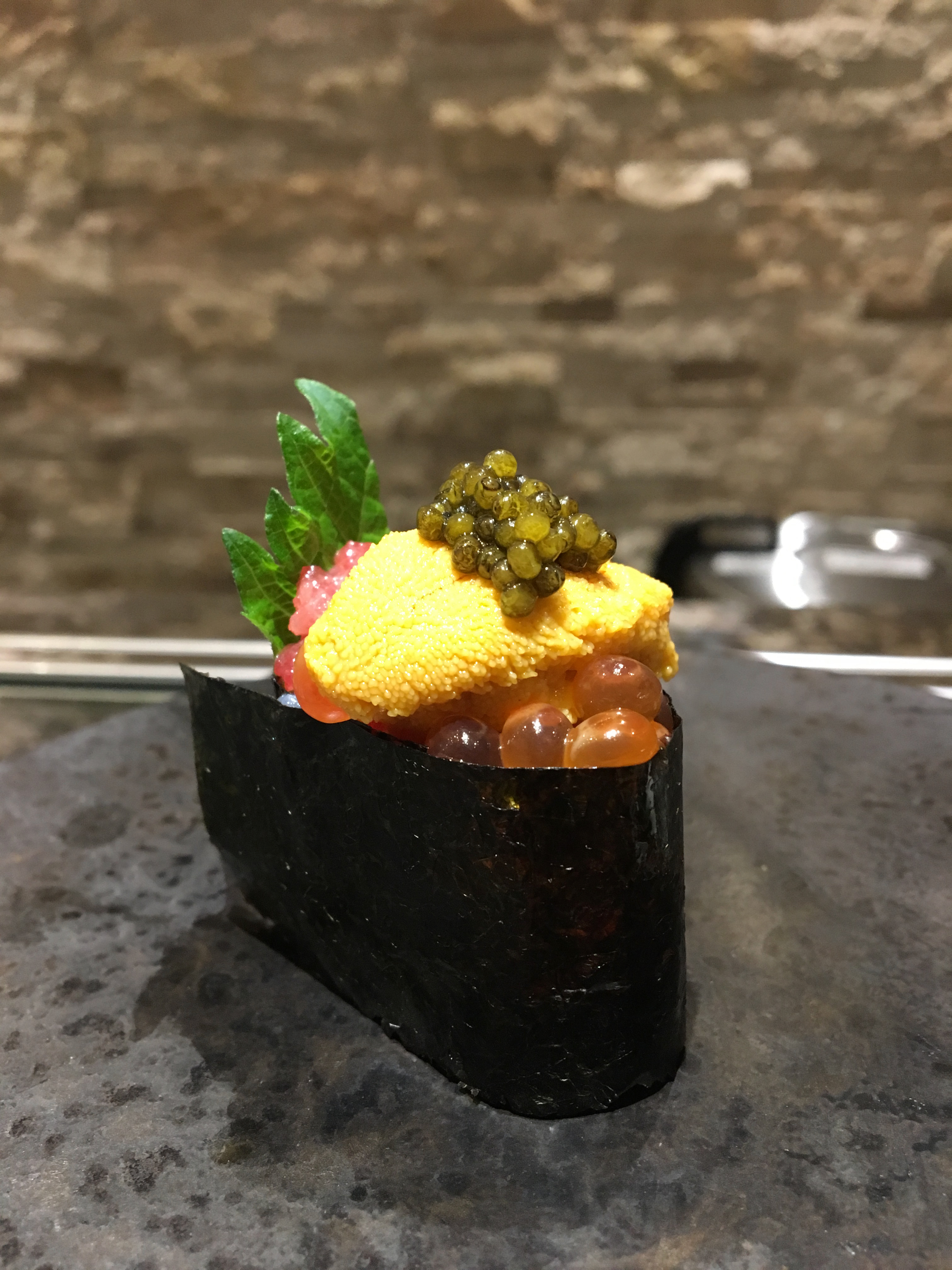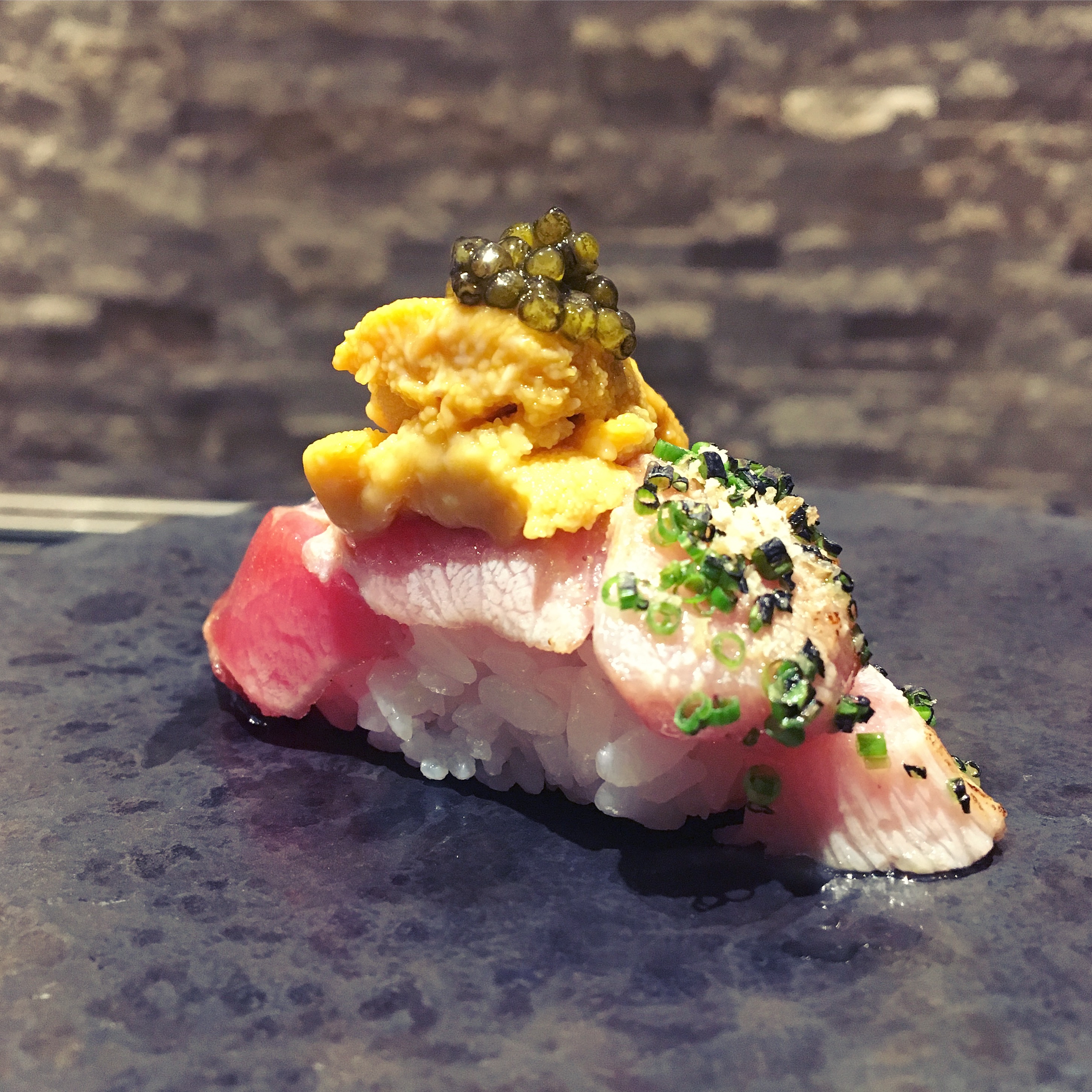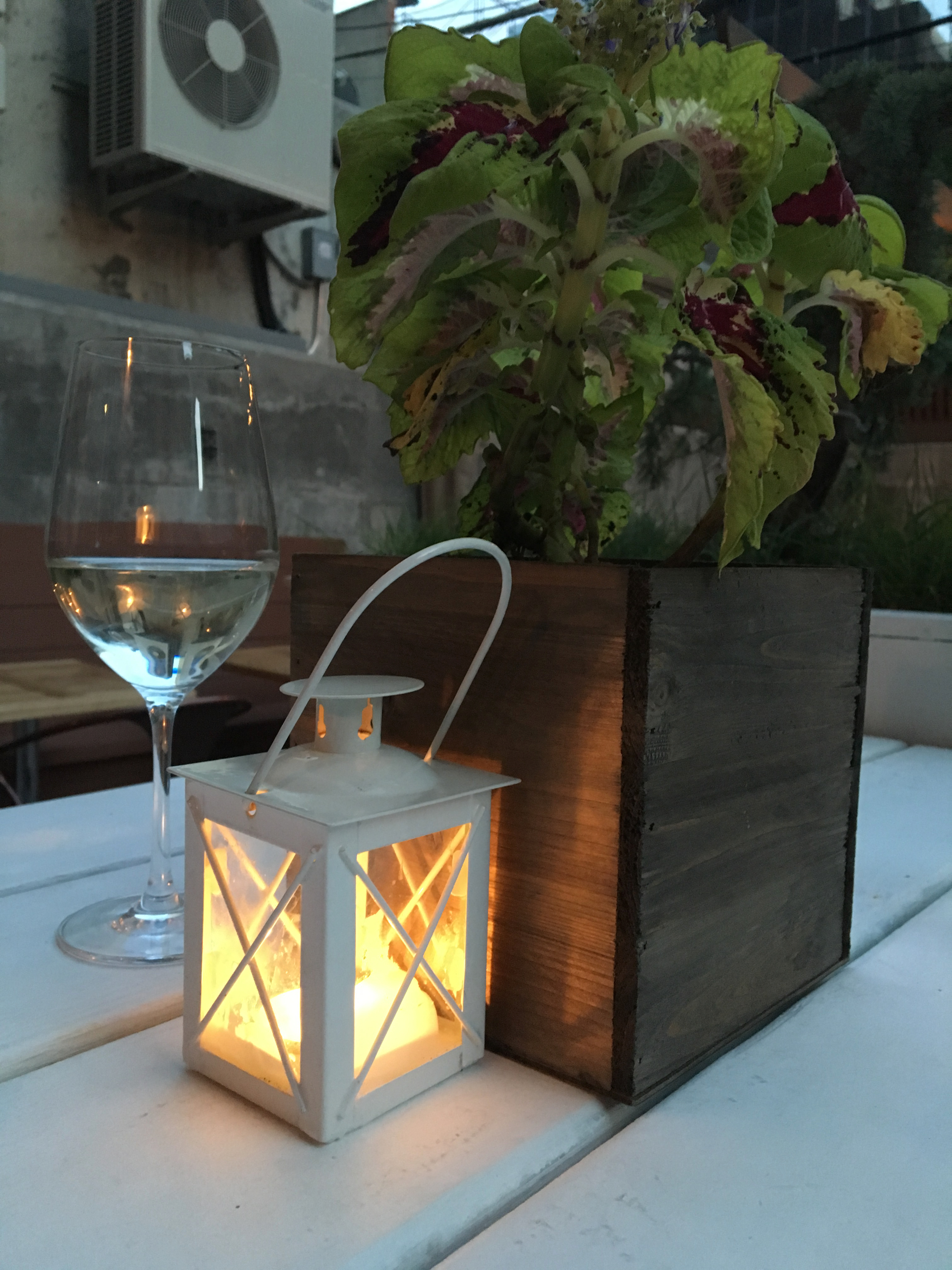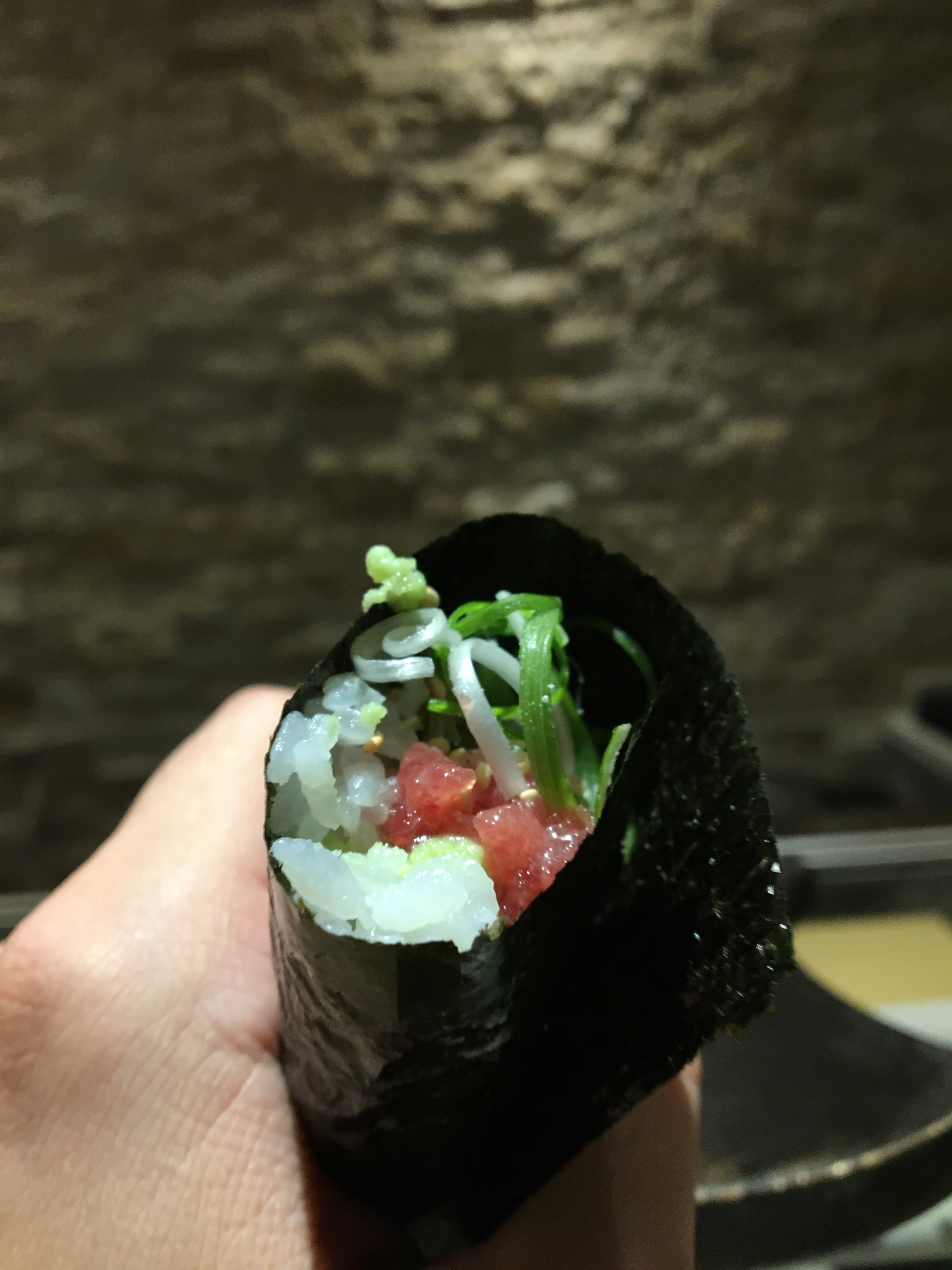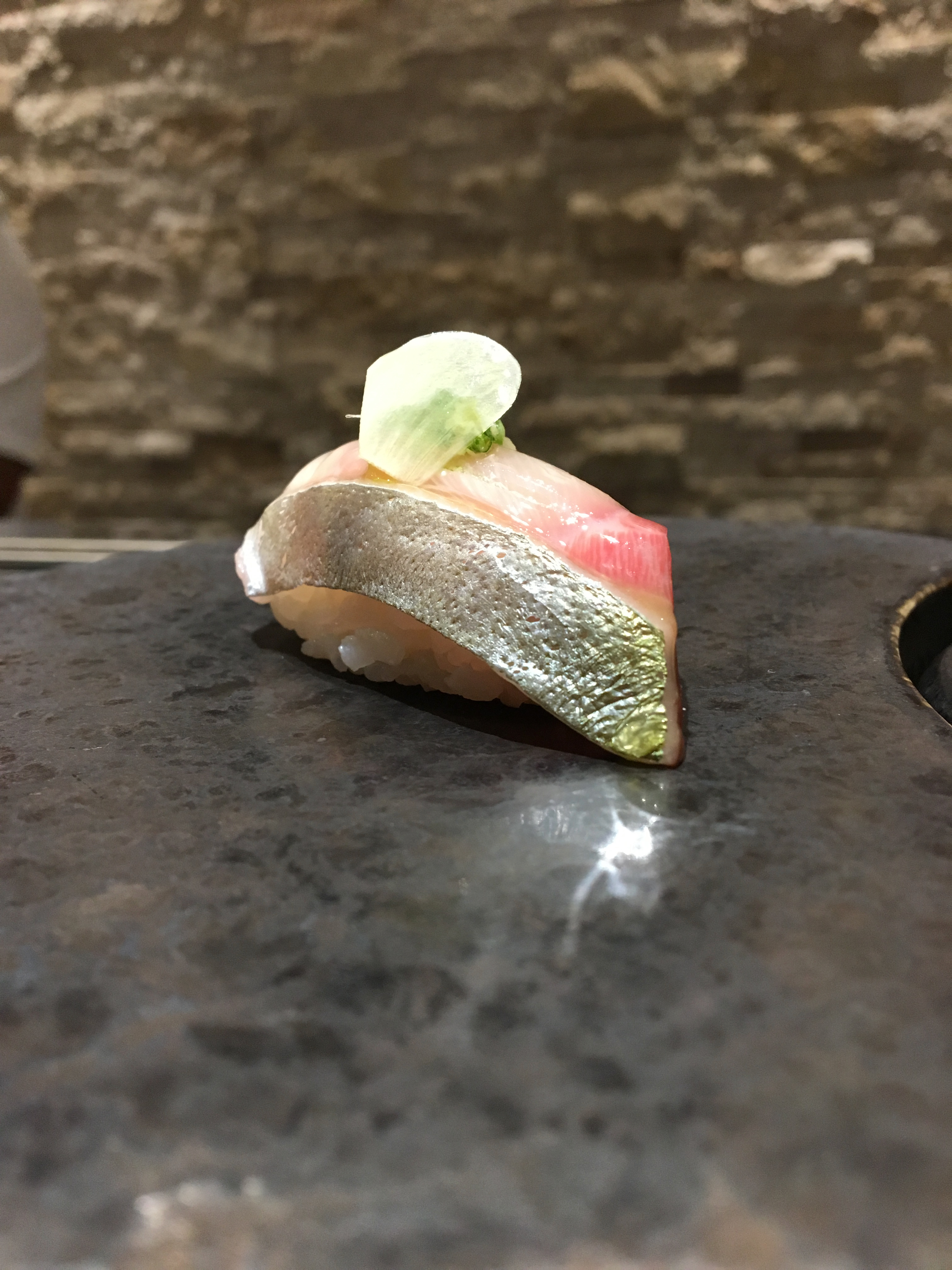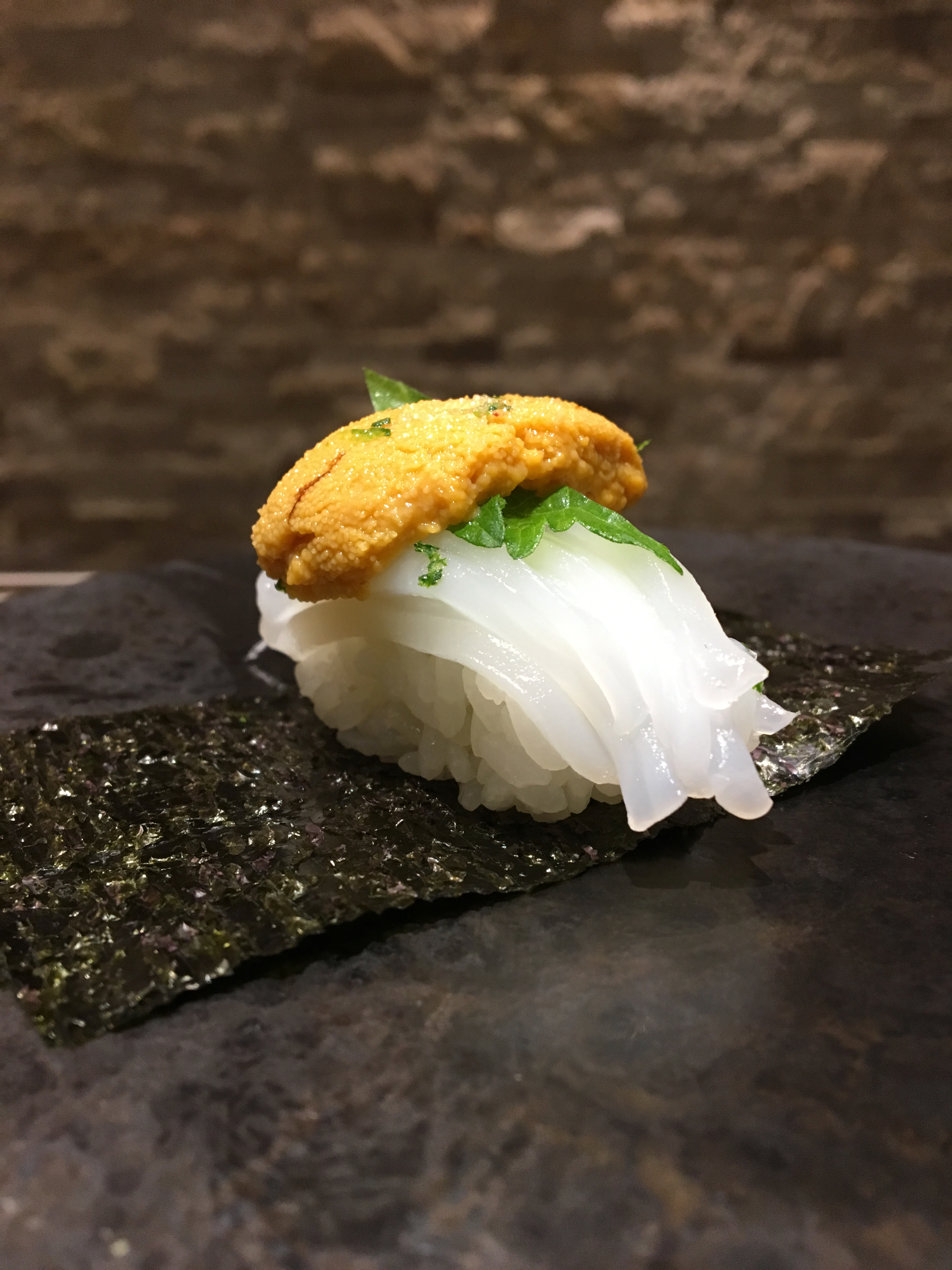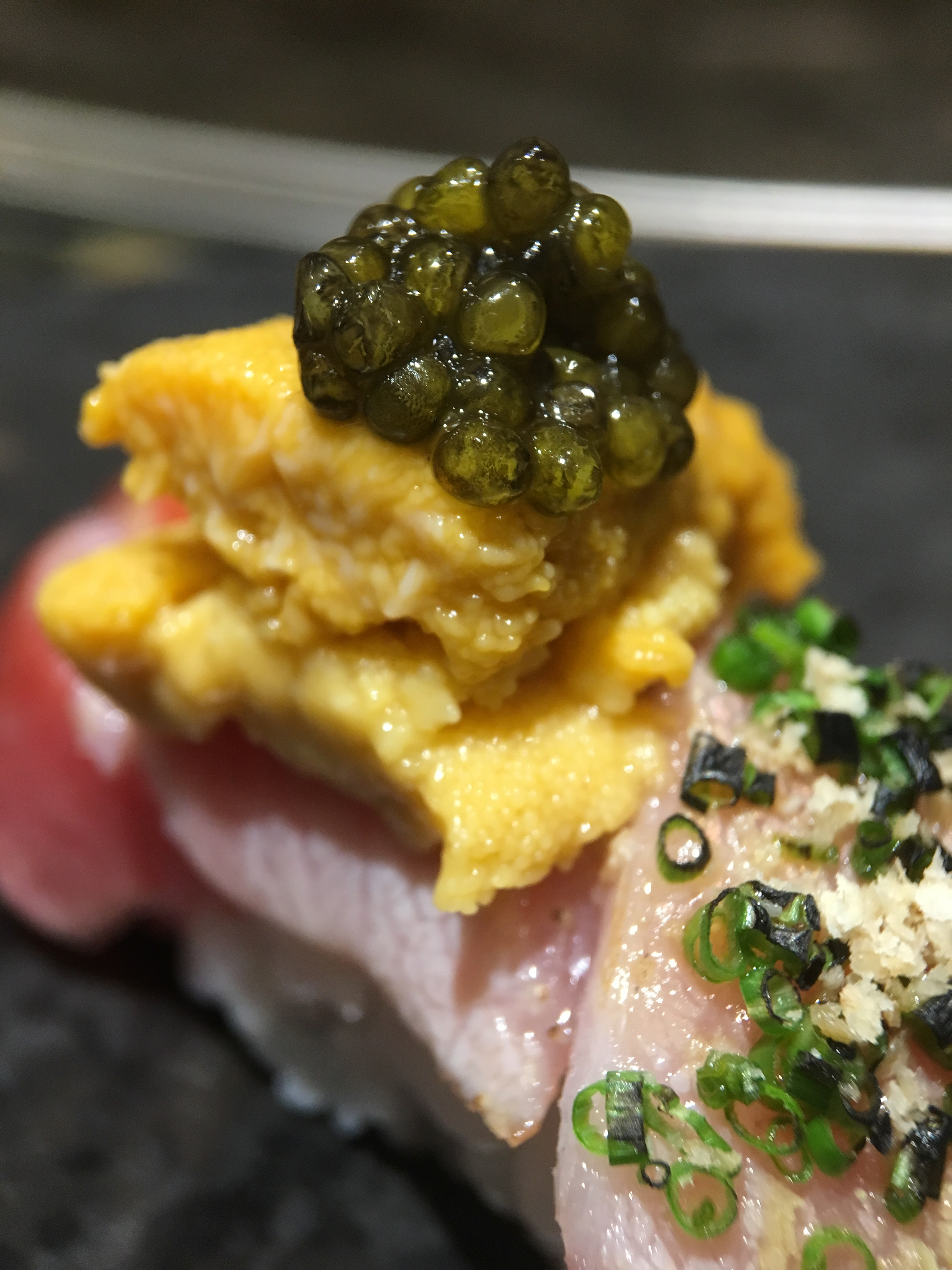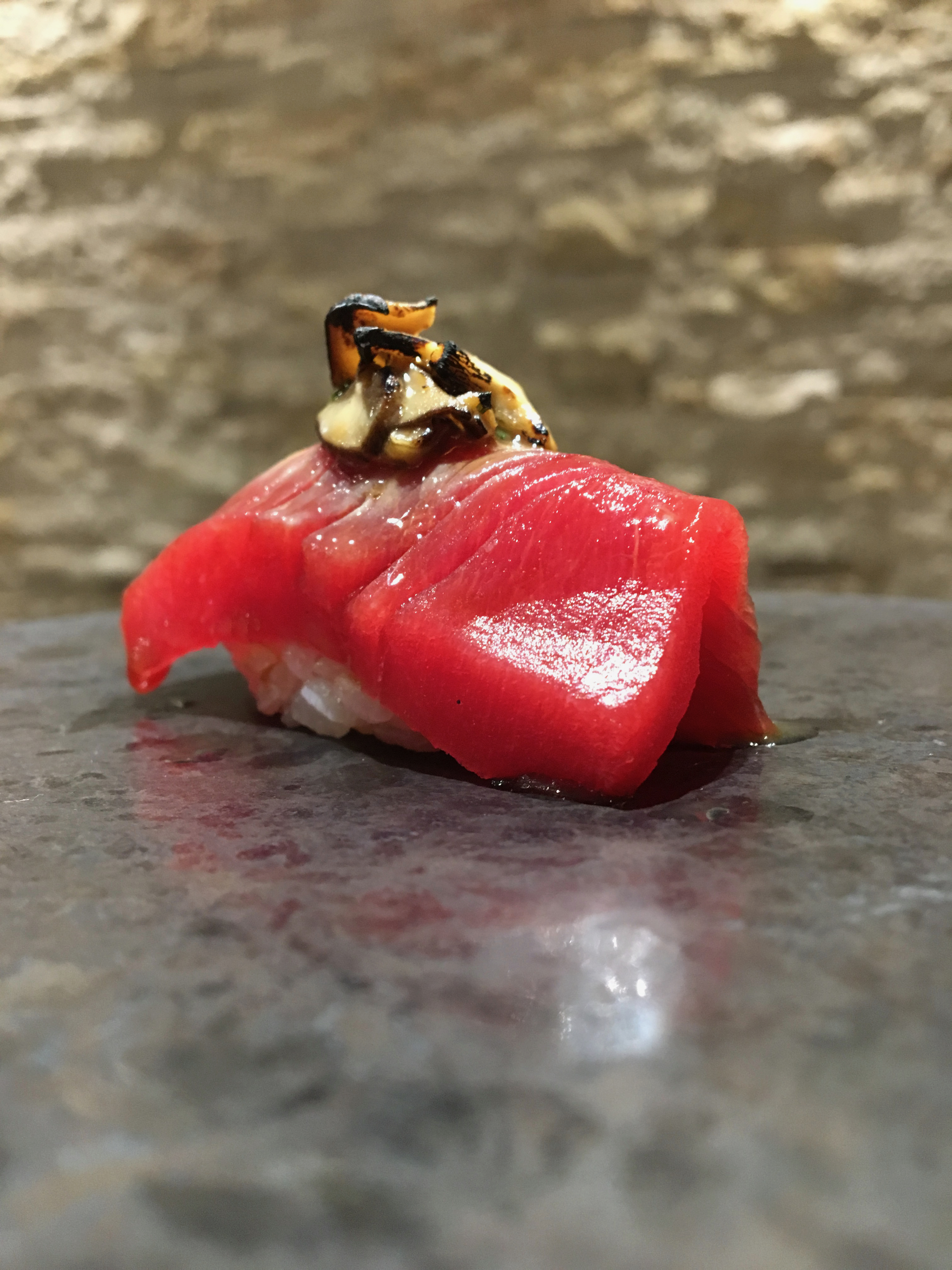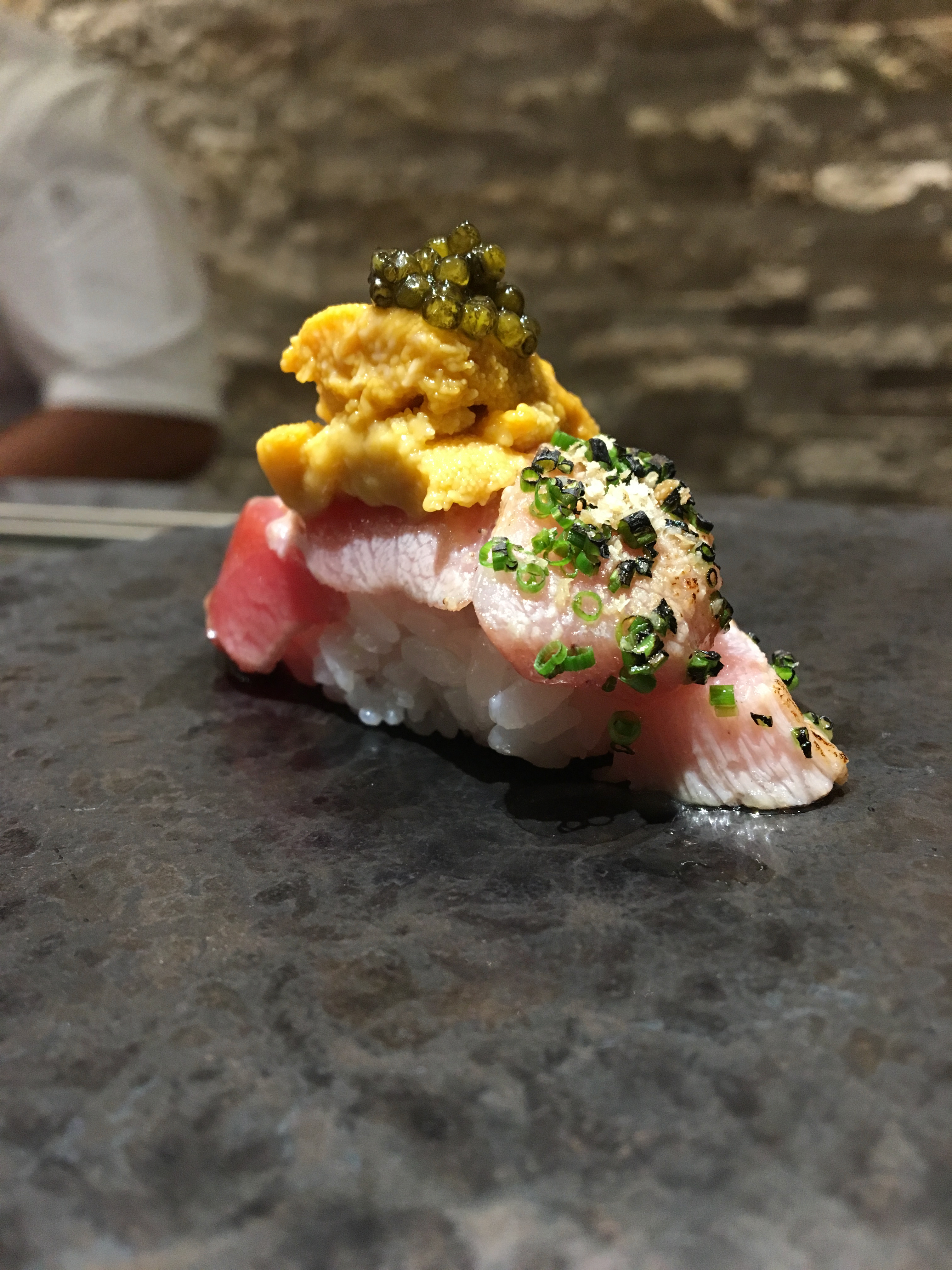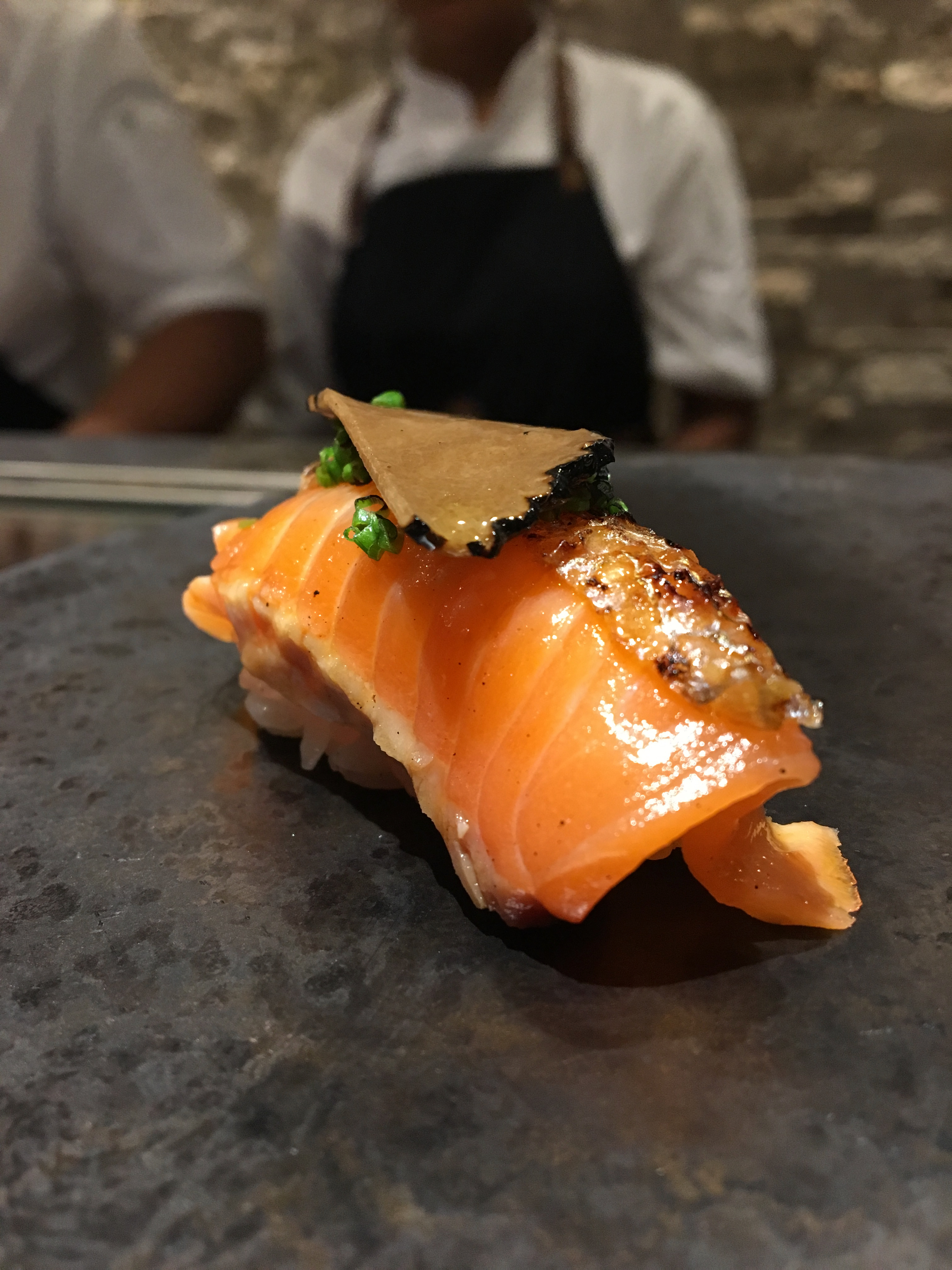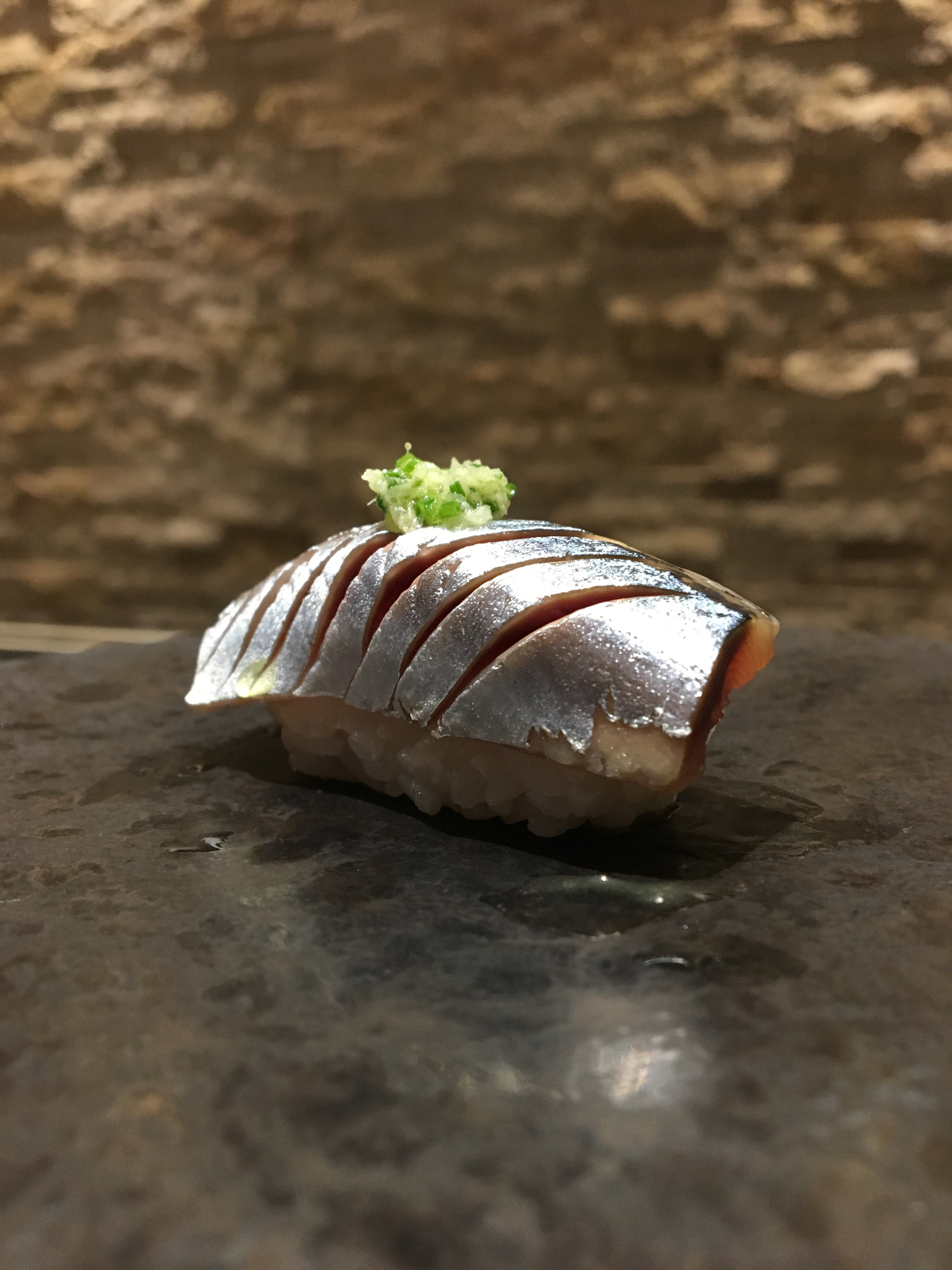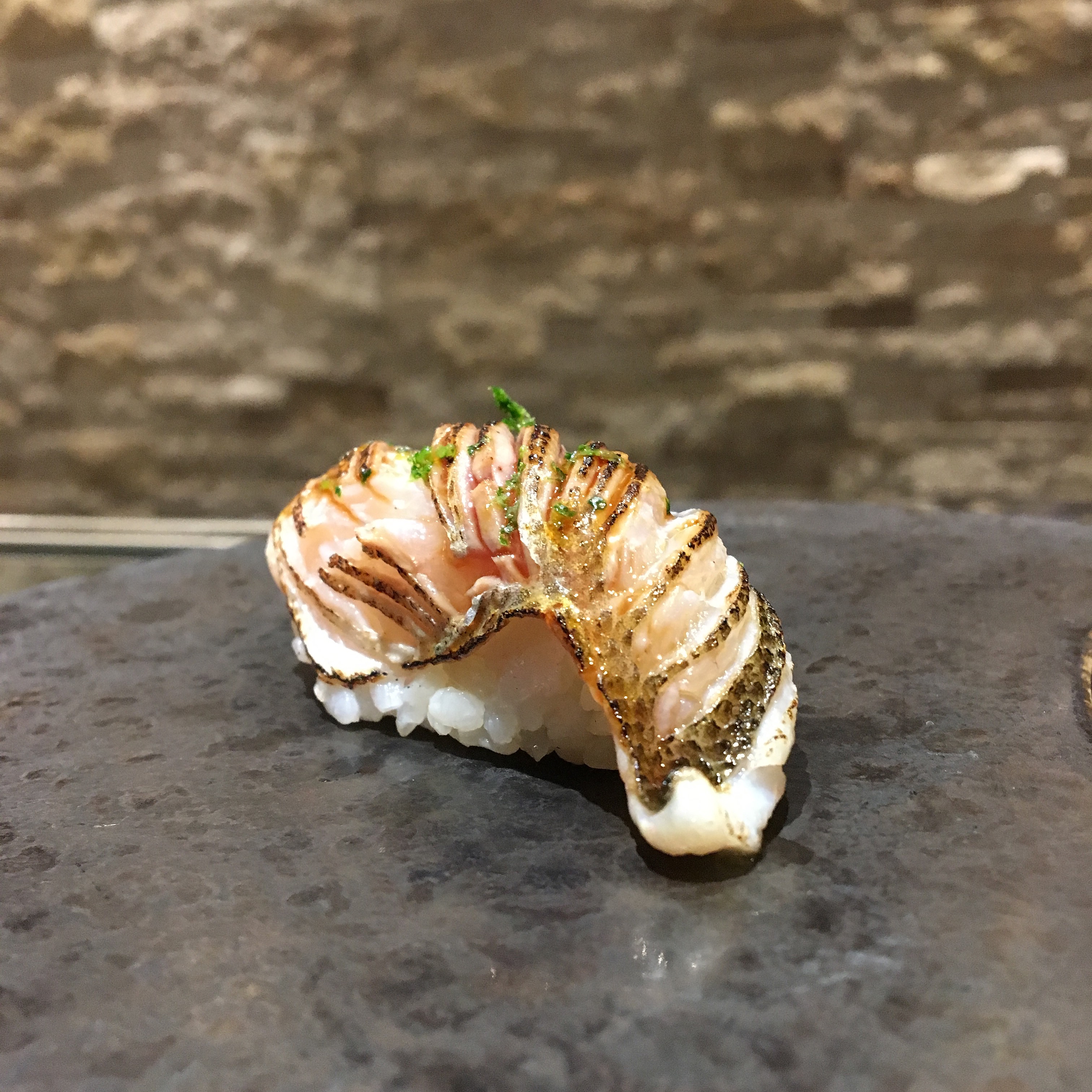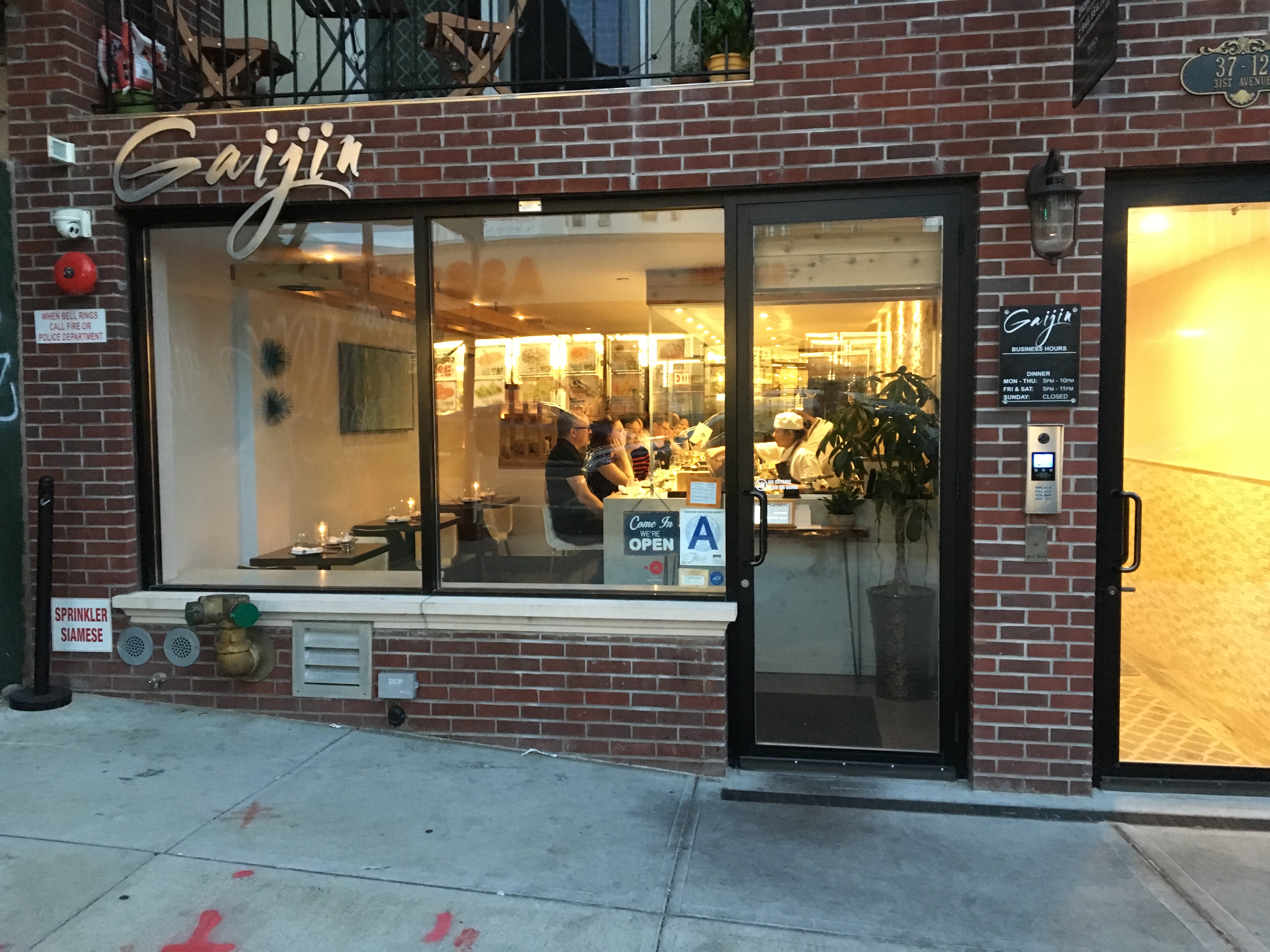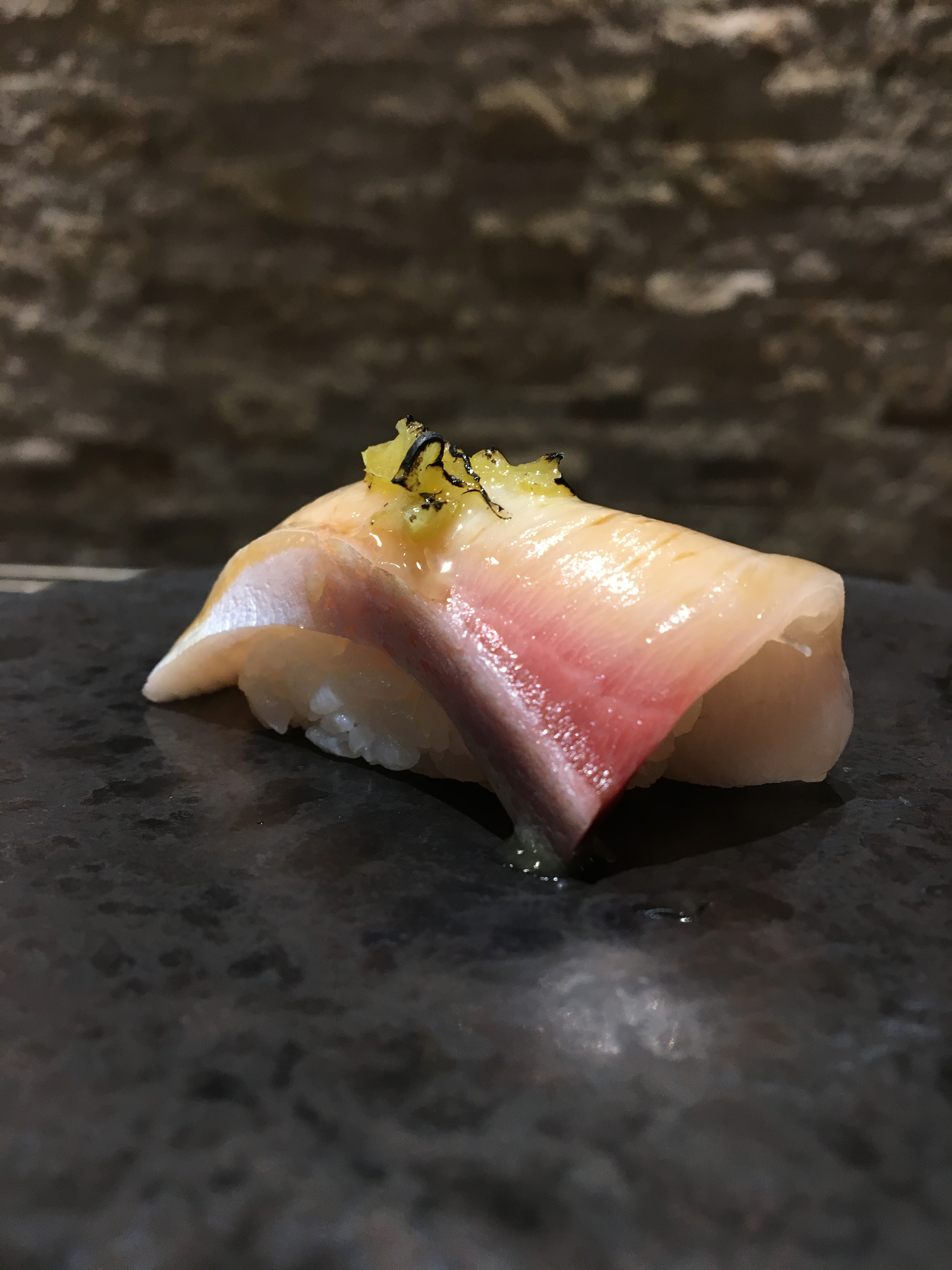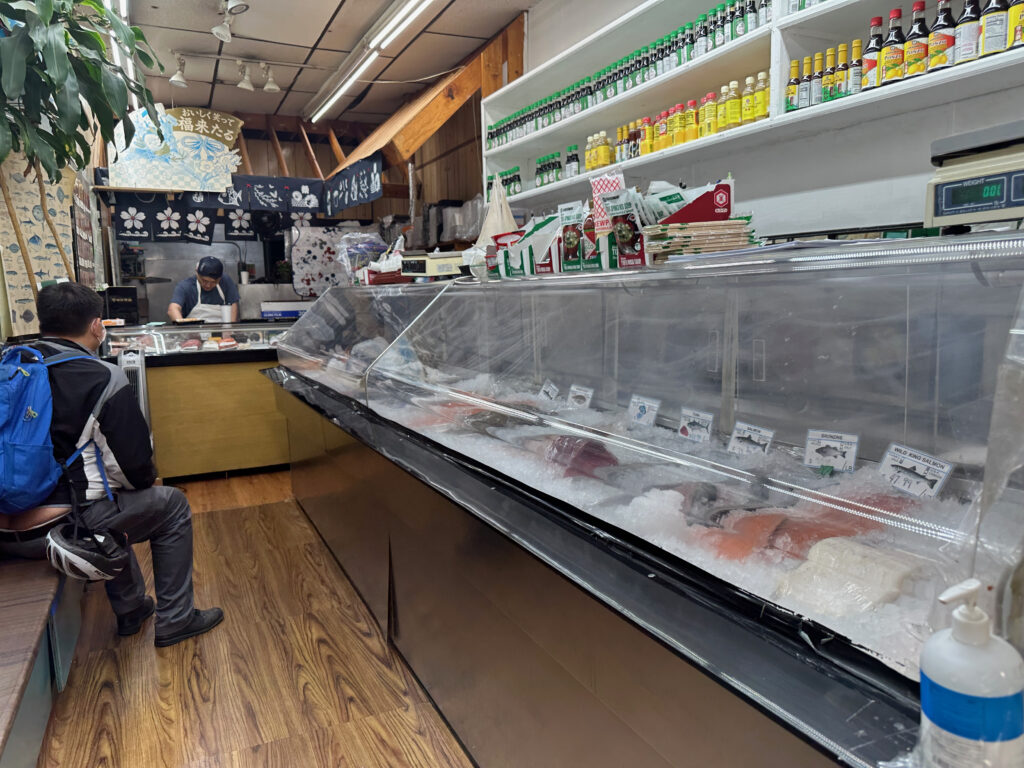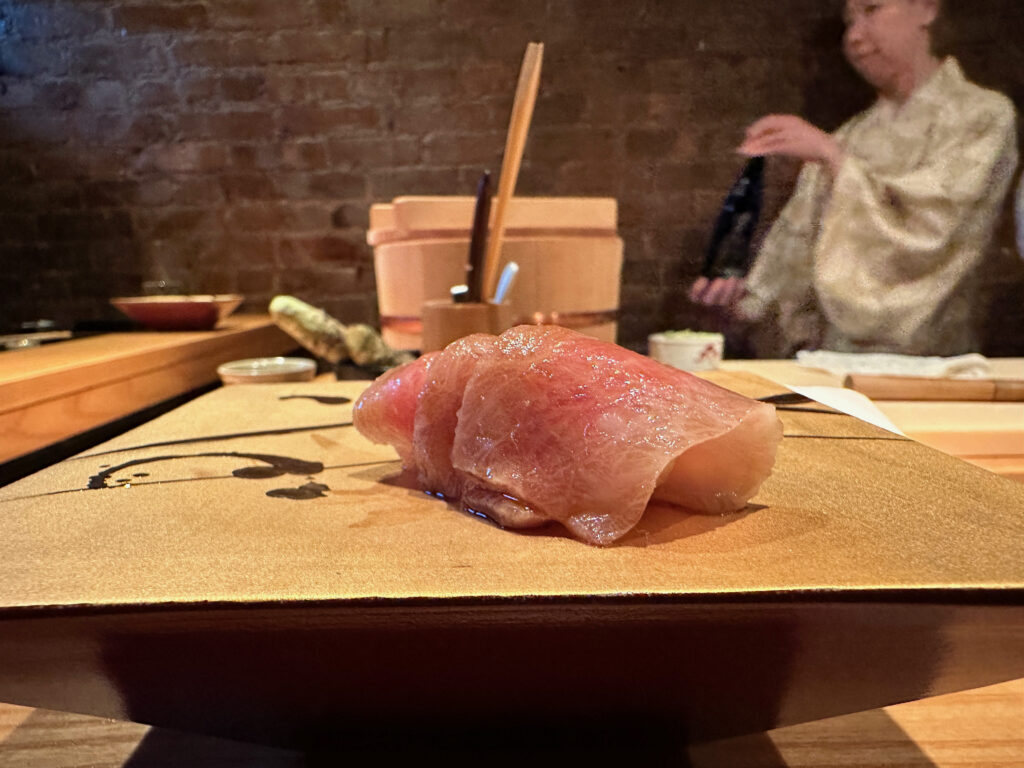Creativity is a funny thing, especially in the sushi game. Despite my personal insistence that sushi is an unparalleled phenomenon, even I have to acknowledge that sushi is, at its core, food. Breaking news. And in the food world, where every half-baked food blogger is – pun warning – looking for the next trend to sink their teeth into, risk-taking chefs can be rewarded handsomely. But for every creative trendsetter, there’s the other side of the coin: the chef who faces criticism for Jon Snow-ing a traditional cuisine.
Mark Garcia, who debuted his modern Omakase at Gaijin in Queens last October, certainly feels that pressure. If you spend any time at all eating at his sushi bar – as I’m about to recommend that you do – what you’ll feel is his passion. Mark’s background is atypical for Itamae at omakase-focused sushiya in New York City. Mark trained at various restaurants, including Sushi Samba in Chicago, before opening Gaijin with his partner Jay Zheng, the kitchen chef. Mark has not trained in Japan, and he certainly colours outside the lines. If you’re the type of person who might gasp at Hamachi nigiri with a light banana pepper touch, brace yourself, because that’s exactly what you’re going to get.
Gaijin is located in Astoria, a neighborhood earning rave reviews for its appeal to families and diverse cuisine options. It’s location makes it difficult for Manhattan tourists and residents, but not impossible. And in fact, Mrs. Sushi Legend and I relished the opportunity to leave the city, though if your idea of an adventure is “eating sushi on Sundays”, the trip to Gaijin might not be for you. For those of you that make the “trek” – though we’re not exactly talking summiting Everest here – the creativity, passion and atmosphere make Gaijin well worth the trip beyond the wall (two game of thrones references shows that I am right in the crosshairs of popular culture).
Gaijin’s menu is “a la carte” in name only, much the same way that tomatoes are somehow classified as a fruit (sorry, but your heathen science will never convince me). If you’re so inclined, that menu dives between the reserved – Chawanmushi, Robata and Donburri come to mind – and the audacious, like the now-available-at-any-restaurant Bone Marrow. While waiting on the patio, my better half and I snacked on/starvingly devoured the Prawn Tempura from the Robata Grill. And sure, it was enjoyable, in a “we need to eat right now” sort of way. But if you’re making the trek to Gaijin, you’re doing so for the Omakase. A dozen plus courses of nigiri and cold plates, each with a unique slant.
I’ll stop waxing poetically and mention some of the highlights. That Hamachi (yellowtail) was so delicious – so perfectly paired with a small amount of banana pepper extract – that I almost cut up my sushi snob card on the spot. The Akami (pictured below) with truffles and almonds caught me off guard, but the crunch certainly added a new dimension. The silver fish – Sanma (mackerel pike) with scallions and Kohada (gizzard shad) with chives and garlic, were enhanced by their unique, non-traditional dressings. It helps that the shari – the rice, the lifeblood of sushi – was nailed at an excellent temperature and texture. After an uneven Kasugo (baby sea bream) started the meal, I suspect that fresher rice was used for the remainder (a good sushi chef will recognize this quickly).
Not to belabour the point, but I can certainly imagine a world where Gaijin is panned for unnecessarily editing the perfect cuisine (yes, I’m biased). In fact, I wrote that very article after visiting the mayo factories of Sushi of Gari and Kazunori. But in my opinion, what keeps Gaijin in the “worth a visit” bucket is how – with the exception of the chu toro/uni/caviar matterhorn (pictured right) – Chef Mark keeps his nigiri understated. The fish and the rice are allowed to breathe, rather than be drenched in creamy toppings or drowned in soy sauce or smothered with wasabi. Each of the nigiri stand alone, but taken together, they jointly emphasize the creativity and passion of the chef.
Gaijin’s neighborhood location may not be ideal for city dwellers, but it allowed the owners to be creative with its space. The patio behind the restaurant is surrounded by apartments and feels like a low-key oasis in an urban jungle. I’m not surprised that there were multiple dates in progress during our visit.. The inside of Gaijin is long and narrow, with a sushi bar stretching half the restaurant, and tables interspersed throughout. The modern furnishings and well-placed lights create both an excellent ambiance and a perfect storm for amateur photographs like yours truly. Mostly, though, the atmosphere at Gaijin is welcoming, which is ironic considering that it translates to “outside person”. Gaijin’s name is meant to reflect Garcia’s non-traditional training, but as more people give his omakase a try, I suspect that the name may not be appropriate for long. Gaijin deserves to be considered among the city’s best.
